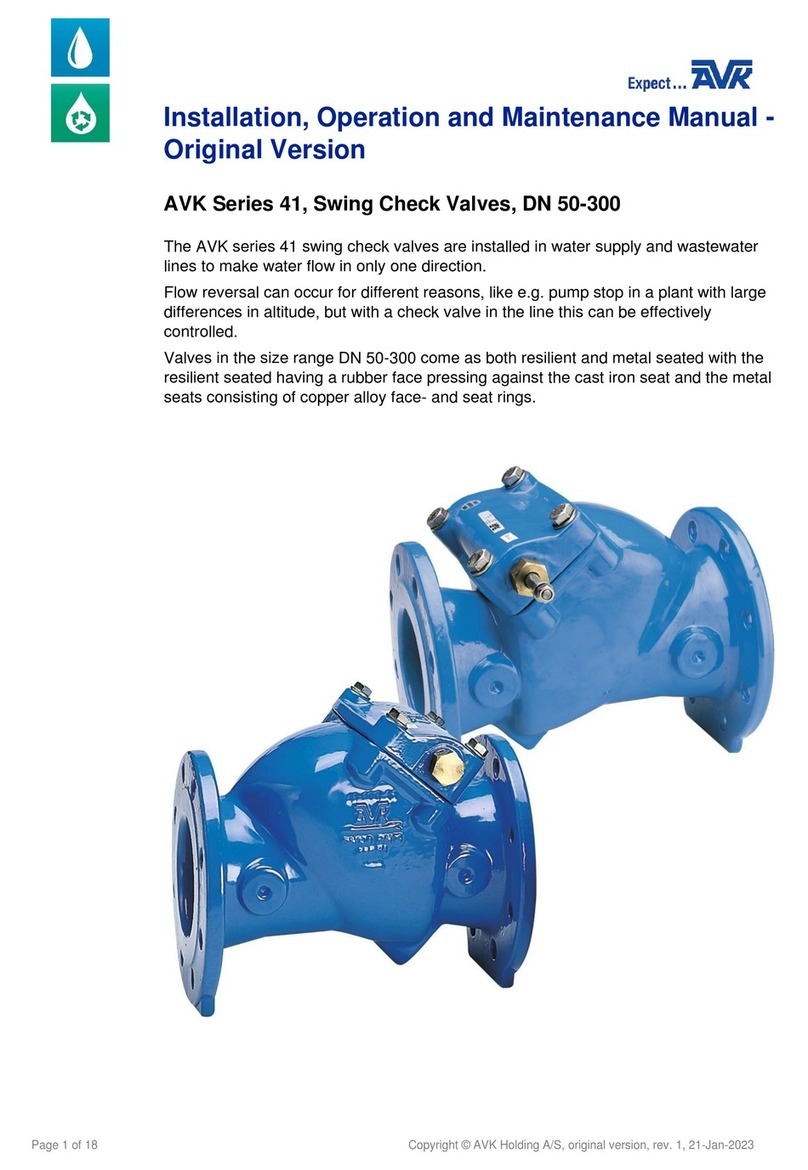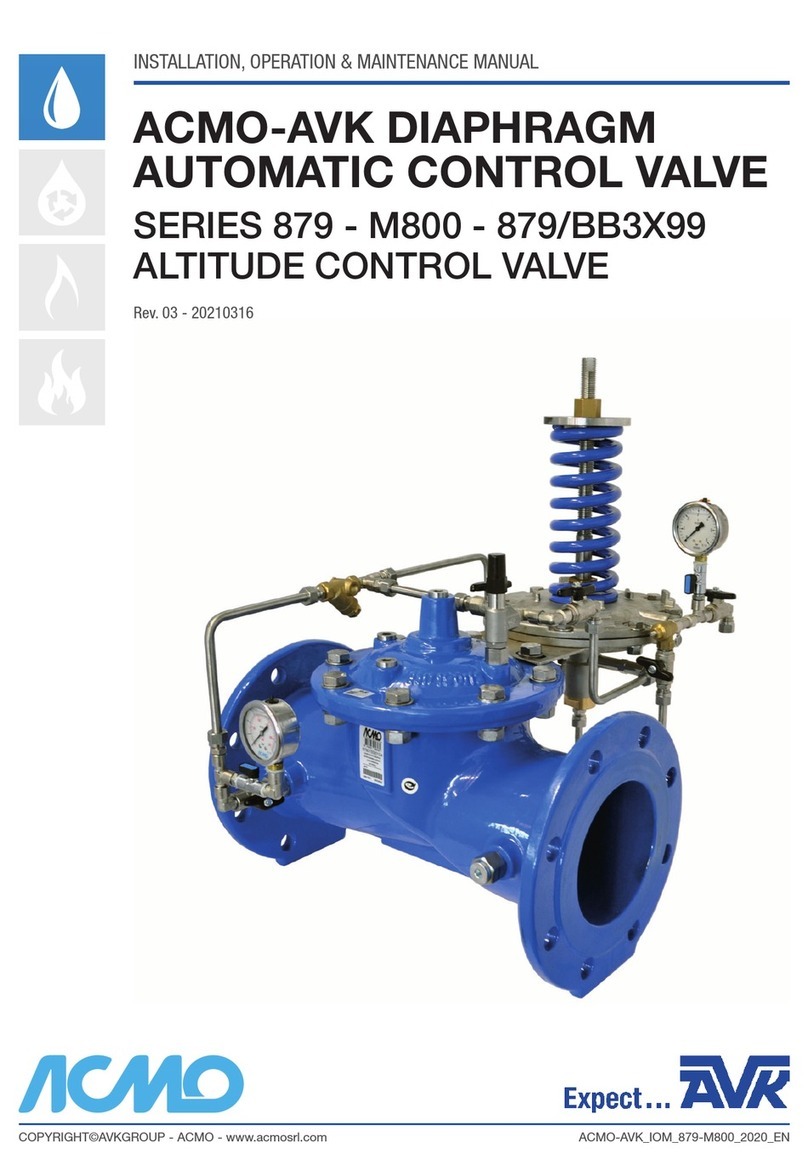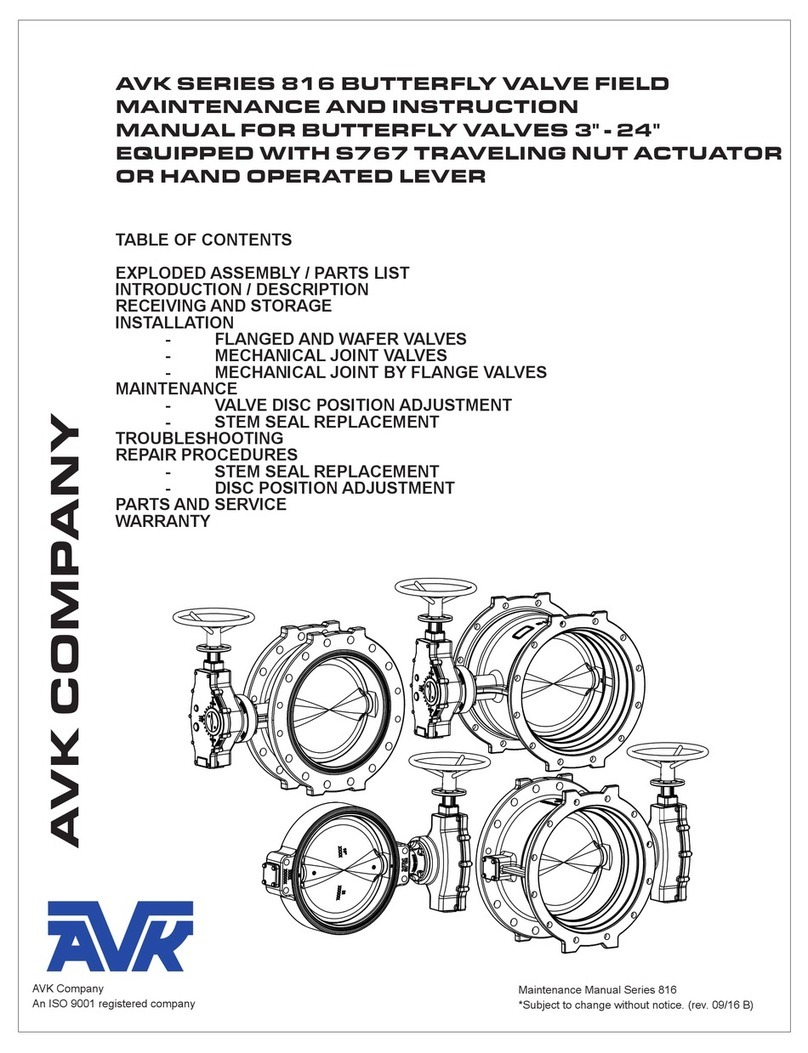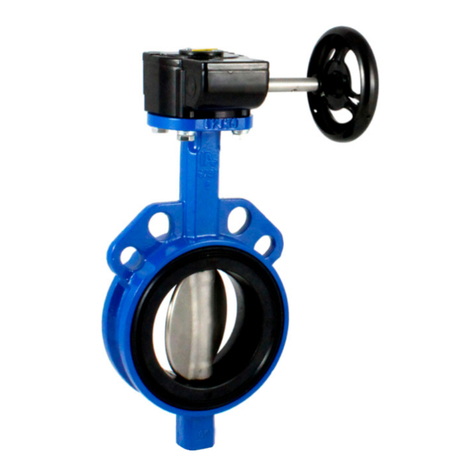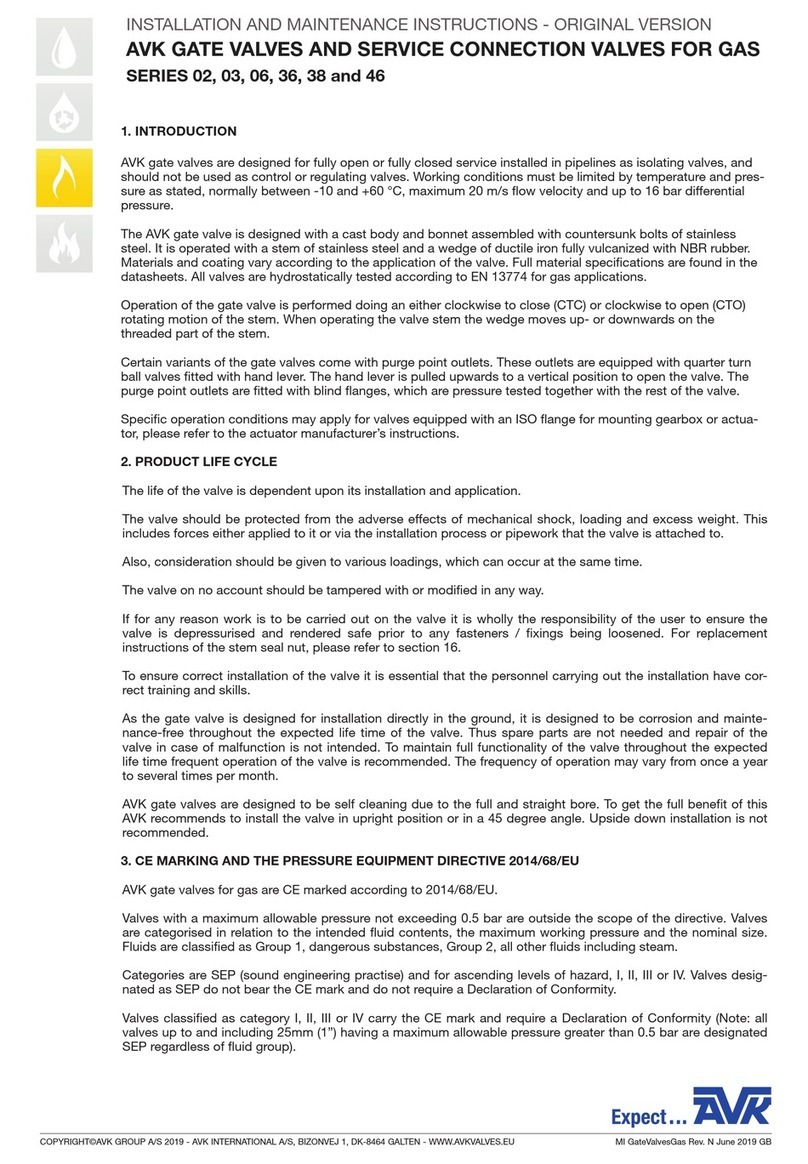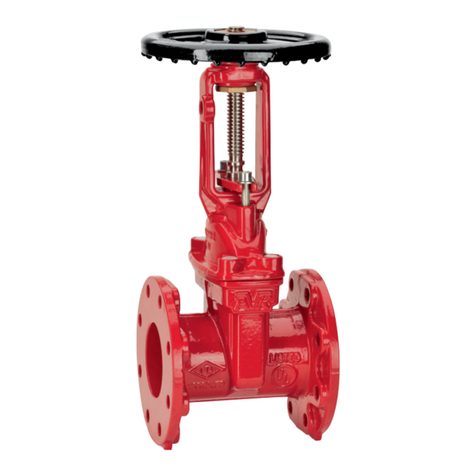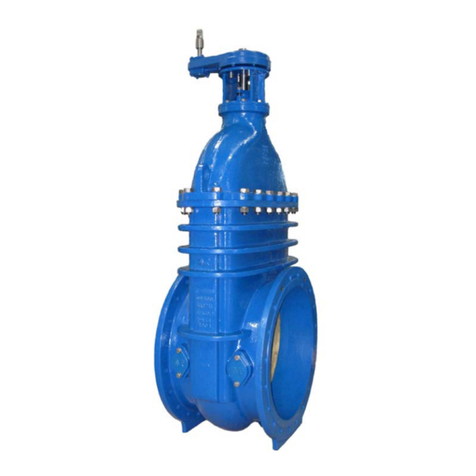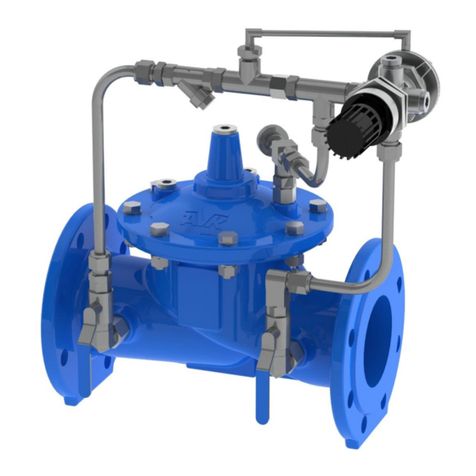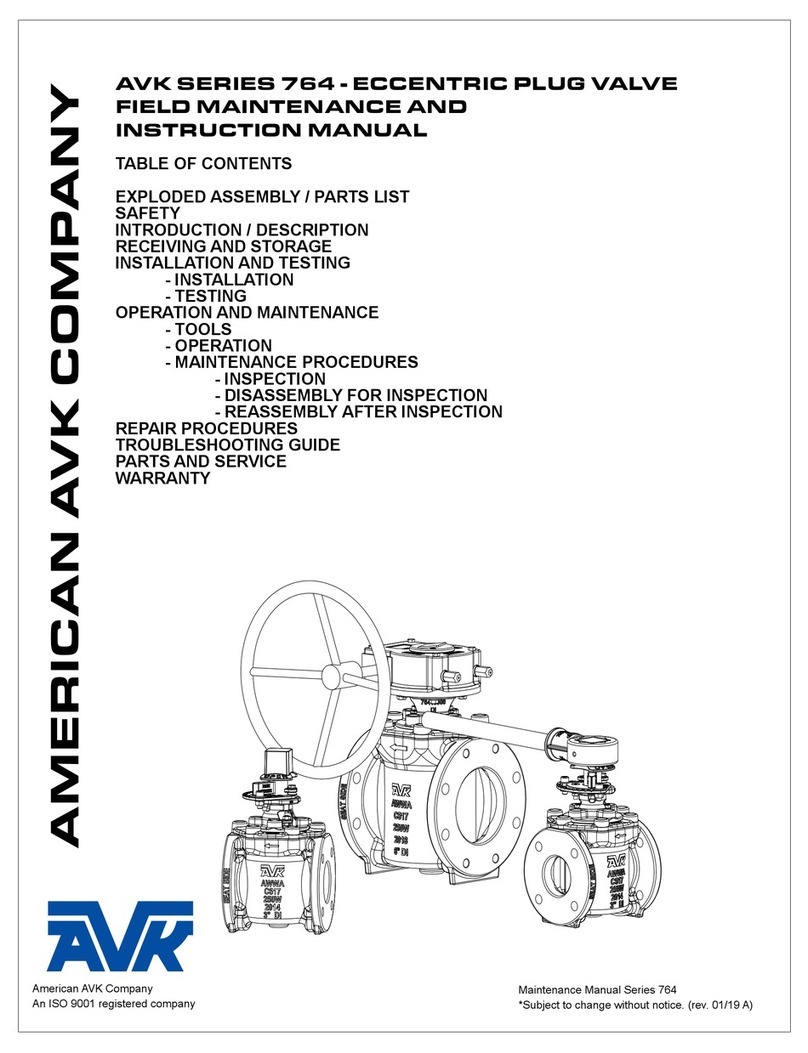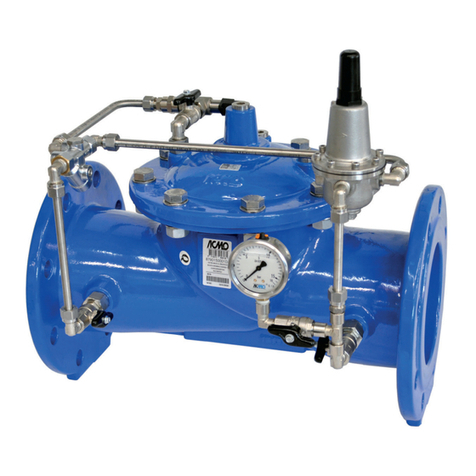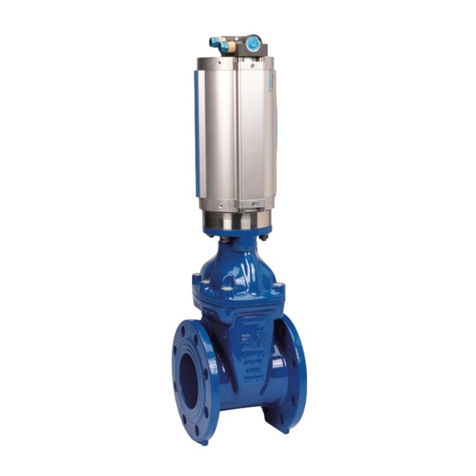
AVK SERIES 41 CHECK VALVE
INSTALLATION, OPERATION & MAINTENANCE MANUAL
Instruction for use
Thank you for selecting an AVK product. With correct use, the product is guaranteed to deliver a long and
reliable service. This manual has been prepared to assist you with the installation, operation and maintenance
of the valve to the maximum efficiency. For ease of reference, it has been divided into sections covering all
aspects of use, and it is in the users best interests to read it and ensure that it is fully understood.
Health and Safety
It is always recommended that wherever work is being carried out on a valve that the valve is fully
depressurised prior to carrying it out, and for the convenience draining of the line may be beneficial.
It is essential that the user of the valve is aware of the weight of the components and/or assembles that must
be handled and manipulated during installation and maintenance. It is the users responsibility to ensure that
safe working practices are followed at all times.
Whenever AVK products are installed, operated, or maintained, it is essential that the staff that undertake
these operations be adequately trained. The hazards of pressurised liquids and gases can be severe, and it
is the responsibility of the users to ensure that trained, competent staff undertake these duties. This manual
has been designed to assist, but it can never fully replace quality training in the workplace. AVK technical staff
will always be available to answer any questions relating to specific problems that may not be covered by this
manual.
AVK products are designed and manufactured to be fit for purpose, and to a high and reliable standard. This
provides a safe product with minimum risk to health when used correctly for the purpose for which it was
designed. However, this assumes that the equipment is used and maintained in accordance with the manual,
and the user is advised to study this manual, and to make it available to all staff that may need to refer to it.
AVK cannot be held responsible for any incidents arising from incorrect installation, operation or maintenance.
The responsibility for this must rest wholly with the user.
A
VK
V
alves
Pty
Ltd,
559A
Grand
Junction
Road,
Wingfield,
SA
5013,
Australia
-
T
:
+61
8
8368
0900
-
E:
[email protected] -
W:
www
.avkcivil.com.au
V
ersion
number
3
COPYRIGHT©AVK GROUP A/S 2017 pp. 1 of 13
